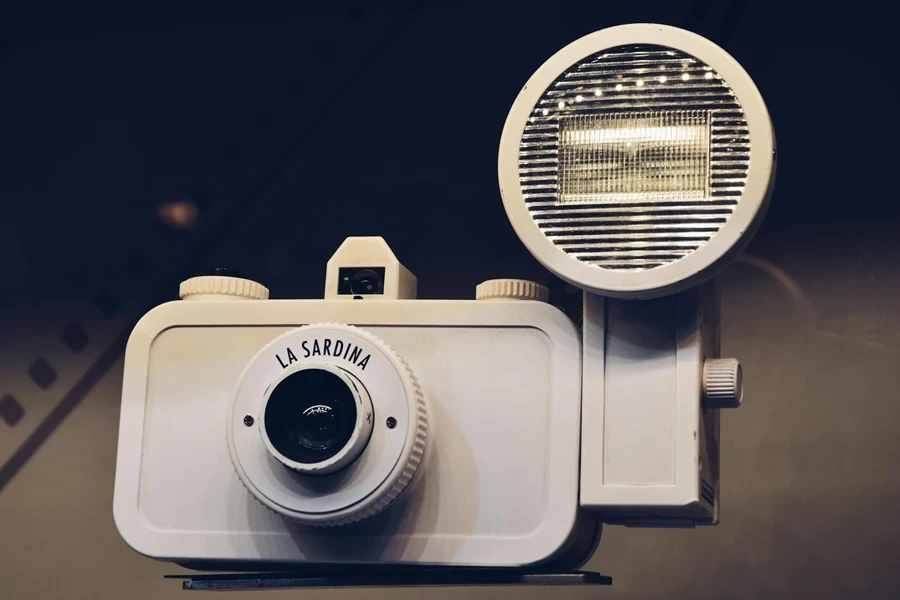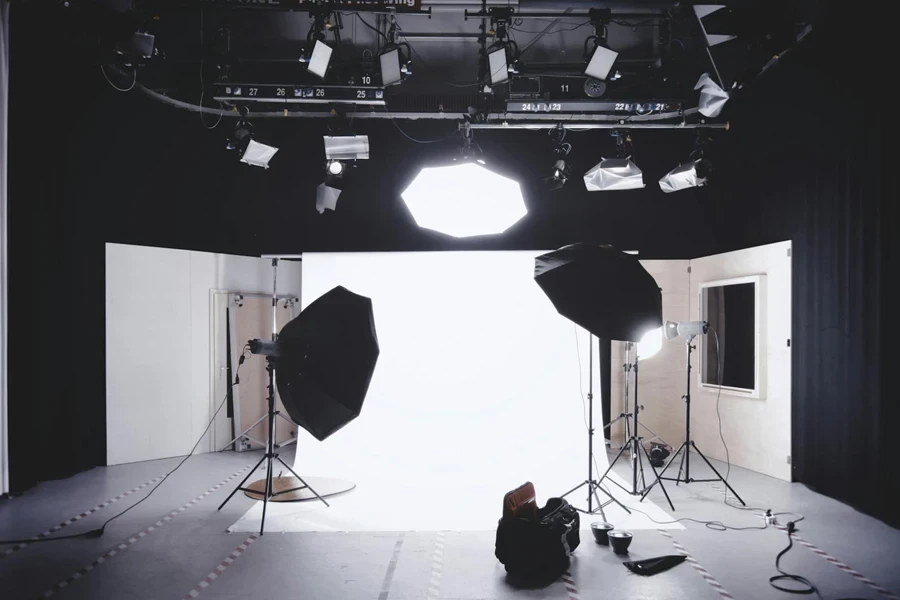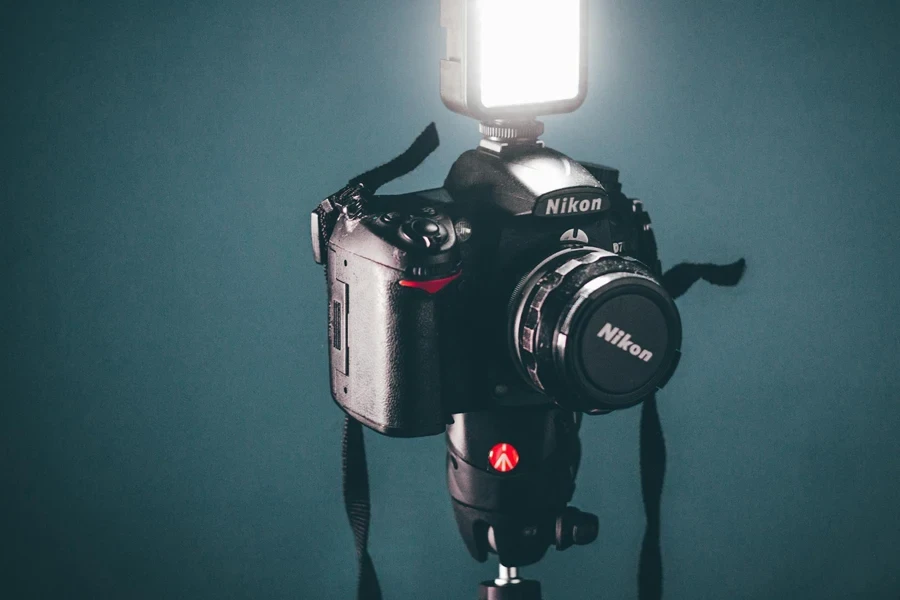Table of Contents
● Introduction
● Market overview
● Things to consider when selecting flash diffusers
● Best products and their features
● Conclusion
Introduction
Flash diffusers are essential tools for photographers aiming to elevate the quality of their images. These accessories are crucial for managing and softening the harsh light that flash units emit, preventing unflattering shadows and overblown highlights. By spreading the light more evenly, diffusers create a more natural-looking illumination that enhances the depth and detail of the subject. Whether shooting portraits, still life, or macro photography, using a flash diffuser can significantly improve the consistency and aesthetic appeal of your photos. This guide will delve into the factors to consider when choosing a flash diffuser and review some of the best options available to help you make informed decisions for your photography needs.

Market overview
The flash diffuser market is currently witnessing a robust growth trajectory, according to MarketsandMarkets, with forecasts indicating a compound annual growth rate (CAGR) of approximately 9% from 2023 to 2030. This upsurge is largely fueled by the increasing adoption of advanced photography equipment among both amateur and professional photographers who are looking to enhance the quality of their images. The market’s expansion is also driven by a rising awareness of the pivotal role that lighting plays in photography, prompting higher demand for accessories that can deliver superior light management. Technological advancements have paved the way for more sophisticated diffuser designs that offer enhanced light dispersion, contributing to the market’s growth. Additionally, the integration of new materials and adaptable features has led to the development of flash diffusers that not only improve the aesthetic quality of photos but also bring practical advantages such as portability and ease of use.
In response to evolving consumer preferences, the market landscape for flash diffusers is continuously shifting. Established brands and new entrants alike are vying for significant market shares, which has led to a dynamic competitive environment. For instance, the introduction of multifunctional and durable products that cater to a range of photography styles is becoming a key factor in brand differentiation. Moreover, the market is segmented by the type of photography—such as portrait, macro, and event—with each segment experiencing different growth rates; portrait diffusers, for example, are seeing an annual increase in sales of around 7%, while macro photography accessories grow by about 5% each year according to MarketsandMarkets. As companies strive to meet these specialized demands, the market is expected to maintain its growth momentum, adapting to the nuanced needs of a diverse consumer base.
Things to consider when selecting flash diffusers
Quality of light
The quality of light is fundamentally shaped by the size and material of the flash diffuser, influencing how light is spread across the subject and scene. Larger diffusers typically produce a softer and more even light distribution, which is especially beneficial in portrait photography, where harsh shadows and bright highlights can detract from the image. Materials commonly used in diffusers include translucent fabrics and frosted plastics, each chosen for their light-scattering properties. These materials help achieve a more natural lighting effect by reducing the light’s intensity and distributing it evenly, thus enhancing the photograph’s overall aesthetic by mimicking natural light.

Compatibility with camera and flash units
Ensuring compatibility between the flash diffuser and the specific camera and flash unit setup is crucial for optimal functionality. A mismatch can lead to suboptimal exposure and inefficient lighting, as the metering systems of cameras are designed to work in tandem with compatible accessories. For professional photographers, this means selecting a diffuser that aligns perfectly with their equipment specifications to maintain the integrity of light measurement and control. This compatibility is vital for achieving the desired photographic effects and maintaining the equipment’s long-term reliability.
Usability in practical scenarios
The usability of a flash diffuser is defined by its ease of attachment, adjustments, and overall handling in various shooting environments. Diffusers with user-friendly designs, such as those with quick-release mechanisms or adjustable straps, allow photographers to make swift modifications in dynamic shooting conditions. The ease of setup and adjustment means less downtime during critical shooting moments and more flexibility in experimenting with different lighting setups. This aspect is particularly important for photographers who work in fast-paced environments where conditions can change unpredictably.
Durability and cost considerations
Durability is a critical consideration when selecting a flash diffuser, as the investment in high-quality, durable materials can significantly affect the product’s lifespan and performance. Flash diffusers exposed to frequent use and varied environmental conditions need to withstand wear and tear without degrading in quality. The initial cost of a more durable diffuser might be higher, but the long-term benefits include reduced replacement frequency and consistent performance. Photographers need to evaluate the balance between upfront costs and potential savings over time, considering how the durability of a diffuser can impact their work and financial outlay.
Making the right investment
Choosing the right flash diffuser involves careful consideration of all these factors—light quality, compatibility, usability, and durability—against the backdrop of cost. Each factor contributes to the overall effectiveness of the diffuser in a real-world photographic setting. Photographers must assess their specific needs based on their usual shooting environments, the nature of their photographic work, and their equipment setup to make an informed decision. The right diffuser not only enhances the quality of photographs but also adds value by improving the efficiency and enjoyment of the photography process.

Best products and their features
Specialized diffusers for macro photography
Macro photography, which often involves capturing extremely fine details of small subjects, demands a flash diffuser that can deliver exceptionally soft and even lighting. To meet these needs, specialized macro diffusers are designed to maximize the surface area through which light is diffused, ensuring it is distributed uniformly over the subject. This uniformity is critical in avoiding harsh shadows or highlights that can obscure the delicate textures and features of subjects like insects, flowers, or intricate crafts. These diffusers are usually positioned very close to the subject to minimize light loss and maximize detail, with materials chosen for their ability to gently scatter light without reducing its effectiveness. Many macro photographers prefer ring or circular diffusers that surround the lens, providing consistent lighting all around the subject. Additionally, these diffusers often include features that allow for adjustments in light intensity and distance, giving photographers the flexibility to work with varying subject sizes and conditions. The ability to adjust the diffuser quickly and easily is invaluable, as macro photography can involve subtle changes in positioning and focus that require different lighting setups.
Advanced diffusers for portrait photography
Portrait photography benefits significantly from the use of advanced flash diffusers that soften light to create flattering images. These diffusers typically feature large, adjustable surfaces that can be manipulated to achieve the desired lighting effect, whether it’s a broad, soft wash of light for a group portrait or more focused lighting for individual features. The best portrait diffusers are designed with versatility in mind, allowing photographers to add or remove layers of diffusion or to include reflective panels that introduce fill light or highlight certain aspects of the subject. Such flexibility is essential in studio settings or outdoor shoots where lighting conditions can dramatically affect the outcome. Additionally, modern portrait diffusers may integrate fabrics or materials that enhance the color accuracy of the flash, ensuring that skin tones are rendered naturally. This capability is particularly important in portrait photography, where the appeal and impact of the final image often hinge on the subtleties of color and light. Portability is also a factor, as portrait photographers often move between various shooting locations and need equipment that is easy to set up and adjust on the fly.
Versatile diffusers for event photography
Event photographers face unique challenges that require diffusers capable of providing quick and effective adjustments to suit fast-changing scenarios. The ideal event photography diffuser is lightweight, easy to mount, and offers quick configurability to adapt to different spaces and lighting conditions. These diffusers are often designed with a snap-on or magnetic mounting system that allows for rapid attachment and removal, a crucial feature when moving quickly through different environments, such as from indoor dim lighting to brighter outdoor settings. Additionally, the best diffusers for events are those that can handle the wide range of distances typical in such photography—from close-up shots of individuals to larger group pictures. They often feature adjustable diffusion levels, which can be quickly altered to soften or intensify the light based on the distance to the subject and the ambient lighting conditions. Foldable and collapsible designs are particularly valued in event photography, as they can be easily transported in a gear bag and deployed as needed without disrupting the flow of the event.

Innovative diffusers for product photography
Product photography requires diffusers that can highlight the features of various items without creating unwanted reflections or shadows. Innovative diffusers for this type of photography often include features like adjustable light angles and multiple layers of diffusion material to ensure that the light is evenly spread across the product. These diffusers are designed to work well with light tents or boxes, which are commonly used in product photography to create a controlled lighting environment. The ability to fine-tune the light’s intensity and direction is crucial for capturing the intricate details and textures of products, whether they are shiny, matte, or textured. Some advanced diffusers also come with color correction filters to maintain the true colors of the products, which is essential for e-commerce and advertising purposes.
Compact diffusers for travel photography
Travel photographers need diffusers that are compact, lightweight, and easy to carry, as they often work in diverse and unpredictable environments. Compact diffusers are designed to be portable without sacrificing the quality of light diffusion. They typically feature foldable or collapsible designs that can fit into a small camera bag or even a pocket. Despite their small size, these diffusers are effective in softening harsh light and reducing shadows, making them ideal for capturing portraits, landscapes, and street scenes on the go. Some compact diffusers also come with attachments that allow them to be used with different types of flashes and lighting equipment, providing versatility for various shooting conditions. The ease of setup and breakdown is a significant advantage for travel photographers who need to move quickly and adapt to changing lighting situations.
Conclusion
Choosing the right flash diffuser is essential for any photographer looking to enhance the quality and creativity of their images. The correct diffuser can transform harsh flash lighting into a soft, flattering light that complements the subject matter, whether it’s the intricate details of a macro shot, the natural beauty of a portrait, or the dynamic energy of an event. It’s crucial to consider factors such as the diffuser’s material, size, and compatibility with your existing equipment to ensure optimal results. The light quality, ease of use, and durability of the diffuser will significantly impact the photographic outcomes, making the selection process critical to achieving desired effects in various photographic scenarios.
Each diffuser type offers unique advantages and can be pivotal in discovering new creative possibilities. Photographers are encouraged to try various models and setups to see how different diffusers affect their specific style of photography. This process not only helps in finding the perfect match for one’s photographic needs but also broadens a photographer’s skill set. As the field of photography continues to evolve, staying open to new tools and techniques, including experimenting with innovative diffuser designs, will keep one’s work fresh and engaging.



